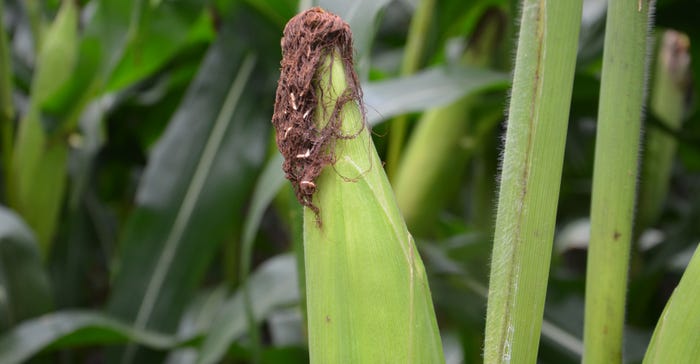
A walk through your cornfields before harvest, or keeping a sharp eye on the crop at harvest, could prove revealing this year. Look long enough and you’ll see how hard corn plants worked to produce viable progeny, even in a year when Mother Nature stacked the deck against them. You’ll also observe signals from the plants themselves, which could help you adjust population, planter settings, tillage practices, drainage and more for 2020 and beyond.
“Corn plants have one goal in life,” says Dave Nanda, director of genetics for Seed Genetics-Direct, Jeffersonville, Ohio. ��“These plants don’t care how much yield you harvest. Their mission is to produce as many viable ‘babies’ as possible.
“Hybrid corn plants don’t know that you won’t be replanting what they produce as seed. Instead, a field of corn will do whatever it takes to produce as many viable progeny as possible — even in a challenging year like this one.”
Most of the time, when corn produces the maximum amount of progeny, you also realize maximum yield, Nanda says. Occasionally, however, some steps that plants take to preserve viable progeny may result in fewer kernels.
“If you get dry weather during pollination or early grain fill, as happened in some areas this summer, plants will abort kernels and concentrate on preserving the kernels with the best chance to make it,” Nanda explains. “Kernels at the tips pollinate last, so they’re usually the first ones aborted if a dry spell signals plants that they may not be able to finish all the kernels which they’ve started.”
Sometimes what you see in the field reflects how well you achieved success with seeding rate selection and planter adjustment.
“If you see doubles, which are two plants very close together, it likely means the planter dropped two seeds at once,” Nanda says. “Those two ears may not be as big as where plants were spaced evenly.”
However, if there’s a gap, plants on both sides of the gap may produce larger ears than where plants are spaced properly. Corn can’t compensate to the degree soybeans can, Nanda acknowledges, but it does what it can. When plants don’t sense neighbors, they tend to produce larger ears — again, trying to maximize the number of kernels. Color of reflected light from surrounding plants can signal to a plant whether there are close neighbors nearby or not.
Too many doubles or skips within the field may indicate you need to pay closer attention to planter adjustment. If the population is so high that ears are smaller than you expect or there are more barren plants than you’d like, it could indicate that you’ve pushed that hybrid to the limit or beyond, at least under the environment present in 2019.
Plants try hard
Earlier in the summer, Nanda noticed many plants in fields that were rebounding well after a late start were sending out a second ear shoot during pollination at another node besides where the main ear emerges. Getting two ears per plant can be somewhat genetic, but this is also affected by weather conditions.
When he visited some of those fields again after a dry stretch, many of those second shoots were still there. However, many didn’t even produce a cob, or if they did, it had very few kernels. Yet under favorable conditions, some plants can produce second ears that contribute more potential progeny, and more yield.
Nanda even observed some ears sending out silks and a tiny shoot from the same node as the main ear.
“It’s not a desirable trait because it just pulls energy away from the main ear,” he says. “However, it illustrates how hard plants try to produce as many progeny as possible. The natural tendency of a corn plant is to make every effort possible to produce babies.”
The take-away message, he says, is that you need to keep in mind the potential reactions by plants to choices you make when developing management plans related to planting and fertilizing corn each season.
Check out the slideshow to see photos of these various situations.
About the Author(s)
You May Also Like




